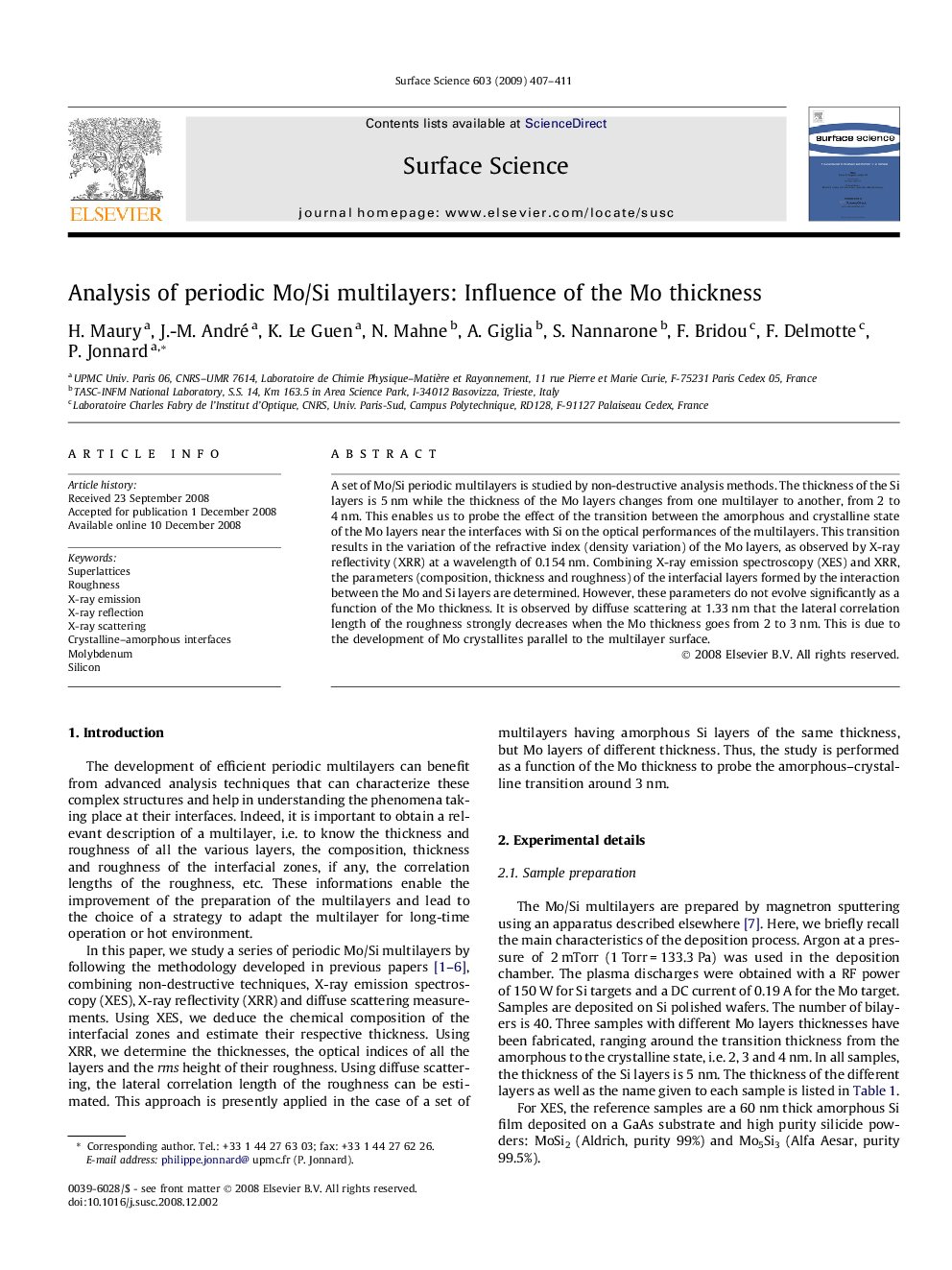| Article ID | Journal | Published Year | Pages | File Type |
|---|---|---|---|---|
| 5424289 | Surface Science | 2009 | 5 Pages |
Abstract
A set of Mo/Si periodic multilayers is studied by non-destructive analysis methods. The thickness of the Si layers is 5Â nm while the thickness of the Mo layers changes from one multilayer to another, from 2 to 4Â nm. This enables us to probe the effect of the transition between the amorphous and crystalline state of the Mo layers near the interfaces with Si on the optical performances of the multilayers. This transition results in the variation of the refractive index (density variation) of the Mo layers, as observed by X-ray reflectivity (XRR) at a wavelength of 0.154Â nm. Combining X-ray emission spectroscopy (XES) and XRR, the parameters (composition, thickness and roughness) of the interfacial layers formed by the interaction between the Mo and Si layers are determined. However, these parameters do not evolve significantly as a function of the Mo thickness. It is observed by diffuse scattering at 1.33Â nm that the lateral correlation length of the roughness strongly decreases when the Mo thickness goes from 2 to 3Â nm. This is due to the development of Mo crystallites parallel to the multilayer surface.
Keywords
Related Topics
Physical Sciences and Engineering
Chemistry
Physical and Theoretical Chemistry
Authors
H. Maury, J.-M. André, K. Le Guen, N. Mahne, A. Giglia, S. Nannarone, F. Bridou, F. Delmotte, P. Jonnard,
